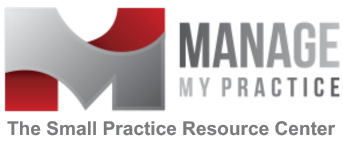
An insured patient that I checked out was shocked when I said the charge for her visit was $100. She said, “But he was only in the room for ten minutes!” I was briefly at a loss for words. I recovered, we agreed on a payment plan for her co-pay, I made a note on her encounter form for the billing office and she left.
I’ve been thinking about our conversation, and thinking about what that $100 – actually the payer would probably only pay about $35 and with her co-pay, the grand total would be $55 – and what that $55 is supposed to cover…
- First, we scheduled the appointment, which was a work-in, so it took several people to take the message, pull the medical record (paper charts), call the patient to assess the problem, determine the need for the appointment and schedule it.
- When the patient arrived, we checked to make sure her address and phone were the same, quickly checked her eligibility to make sure the insurance on file was still in force, and asked for a photo ID. An encounter form was generated at the nurse’s station to notify her of the patient’s arrival.
- The nurse called her from the reception area, weighed her, and took her into an exam room to take her vitals, take a brief Chief Complaint and History of Present Illness, review the medications she is taking and check to see if she needed any chronic medication refills while she was there.
- The physician came in to see her, asked about any changes since she’d last been seen, reviewed her History of Present Illness and examined her. He talked to her about her illness and described a treatment plan for her upper respiratory infection given her chronic health problems.
- He prescribed a medication for her problem, updated her medication list and made a copy for her to take with her.
- He marked the encounter form with the level of service and her diagnoses and gave her the form to take to the check-out desk.
- He refiled the medication reconciliation in the chart, finished documenting the visit, and placed the chart in the bin to be refiled. The chart was filed, and the encounter form was sent to the billing office.
- At the billing office the charges and any payment was posted and the claim was filed. If there was no problem with the claim, it electronically passed through two scrubs and a final one at the payer.
- If payment was not denied for any of a dozen reasons, the payment would arrive at the billing office and would be posted.
- Since the patient did not pay her co-pay at the check-out desk, the patient balance is billed to the patient. If the patient pays on the very first statement, it has taken the practice from 45 to 60 days to receive the complete payment of $55.
I know that patients often say “But he only spent 10 minutes with me.” Checking back with the provider, I find it was typically longer. Patients tend to underestimate the time as it goes very fast.
The total visit encompassed the work of the phone operator, the medical records clerk, the triage nurse, the check-in person, the nurse, the doctor, the check-out person and the biller. It took 8 people, and at least 45 minutes of work to make that appointment happen. Plus, that visit had to help pay the expenses for the rent, the utilities, malpractice insurance, medical supplies, computers, phones and janitorial services.
The practice, the patients and the overseers of healthcare want each visit to be non-rationed, safe, high-quality, error-free, holistic, pleasant, clean, accurate, efficient and reimbursable. It’s what we all want. And it isn’t cheap.
Even though healthcare and healthcare reimbursement have been sizzling hot topics in the past few years, most patients – already anxious and often sick – do not have a strong grasp of what actually goes into the services they receive. They see very little of the behind-the-scenes efforts. I don’t think the patient visit is necessarily the perfect time to educate patients on what goes into an office visit, but maybe each of us should be prepared to offer a meaningful answer when the patient says ““But he only spent 10 minutes with me.”

